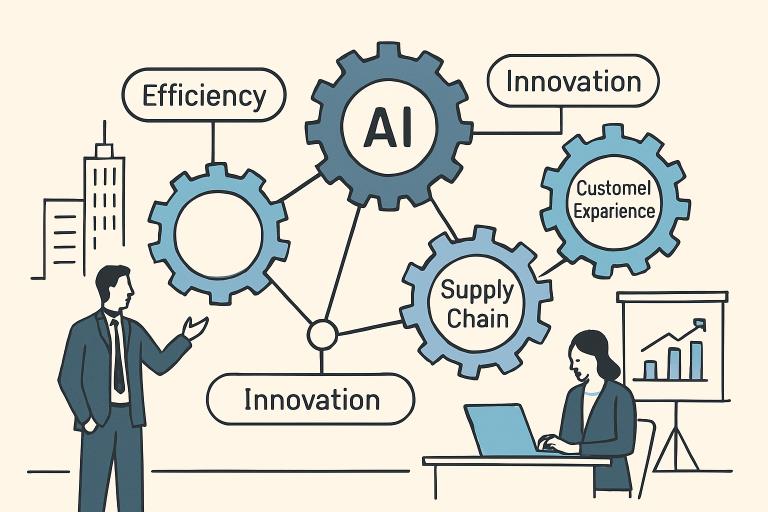Now Reading: 7 Digital Tools That Can Transform Your Clinic’s Productivity
-
01
7 Digital Tools That Can Transform Your Clinic’s Productivity
7 Digital Tools That Can Transform Your Clinic’s Productivity

Healthcare providers face mounting pressure to deliver quality patient care while managing increasingly complex administrative demands. With the average physician spending nearly two hours on administrative tasks for every hour of direct patient care, finding ways to streamline operations has become critical. Digital transformation offers a pathway to reclaim valuable time and improve both staff efficiency and patient satisfaction.
Modern medical practices that embrace technology-driven solutions report significant improvements in workflow efficiency, with some seeing up to 30% reduction in administrative overhead. Here are seven digital tools that can revolutionize your clinic’s productivity and help you focus on what matters most—patient care.
Electronic Health Records (EHR) Systems
Electronic Health Records represent the cornerstone of modern healthcare digitization. These comprehensive systems replace paper-based records with secure, accessible digital files that can be updated in real-time. EHR systems eliminate the time-consuming process of manually filing, retrieving, and updating patient information, while reducing the risk of lost or misplaced records.
Studies show that well-implemented EHR systems can reduce documentation time by up to 25% per patient encounter. The ability to quickly access patient history, medications, and test results means providers spend less time searching for information and more time making informed clinical decisions. Additionally, integrated features like automated prescription refills and lab order tracking streamline routine tasks that previously required multiple phone calls and manual coordination.
Practice Management Software
A comprehensive practice management service serves as the operational backbone of efficient healthcare delivery. These platforms integrate scheduling, billing, insurance verification, and patient communication into a single, unified system. By automating routine administrative processes, practice management software can reduce staff workload by up to 40% while improving accuracy and patient satisfaction.
The scheduling component alone can transform clinic operations. Automated appointment reminders reduce no-show rates by approximately 38%, while online scheduling options give patients 24/7 access to book appointments. Integration with billing systems ensures that insurance verification and copay collection happen seamlessly, reducing delays and improving cash flow.
Telemedicine Platforms
Telemedicine has evolved from a convenience to a necessity, with virtual visits increasing by over 3,000% since 2020. These platforms extend your clinic’s reach while reducing overhead costs and improving patient access to care. Telemedicine tools are particularly effective for follow-up appointments, routine consultations, and managing chronic conditions.
Implementation of telemedicine can increase patient visit capacity by 15-20% without expanding physical space. The technology also reduces travel time and costs for patients, leading to higher satisfaction scores and improved treatment adherence. For practices in rural or underserved areas, telemedicine platforms can dramatically expand the patient base while maintaining quality care standards.
Automated Appointment Scheduling Systems
Advanced scheduling systems go beyond basic calendar management to optimize clinic flow and resource utilization. These tools use artificial intelligence to predict appointment duration, identify optimal scheduling patterns, and automatically adjust for provider preferences and availability. Smart scheduling reduces wait times and maximizes daily patient volume.
The impact on productivity is substantial—automated scheduling systems can increase provider utilization rates by up to 15% while reducing patient wait times by an average of 12 minutes. Features like automated waitlist management ensure that cancellations are quickly filled, maintaining consistent daily schedules and revenue streams.
Digital Patient Communication Tools
Modern communication platforms transform how clinics interact with patients throughout their care journey. These tools encompass secure messaging, automated follow-up sequences, appointment confirmations, and educational content delivery. Digital communication reduces phone calls to the clinic by up to 60% while improving patient engagement and satisfaction.
Automated messaging systems can handle routine inquiries about office hours, directions, and basic medical questions, freeing staff to focus on complex patient needs. The ability to send targeted health reminders and educational materials also improves preventive care compliance, leading to better patient outcomes and reduced emergency interventions.
Mobile Health (mHealth) Applications
Clinic-branded mobile applications provide patients with direct access to their health information while streamlining administrative processes. These apps typically include features for appointment scheduling, prescription refill requests, test result viewing, and secure messaging with providers. Patient portal usage through mobile apps increases engagement rates by approximately 45% compared to web-based portals.
The administrative benefits are equally impressive. Mobile apps reduce front desk call volume by automating common requests and providing self-service options for routine tasks. This technology also enables better chronic disease management through symptom tracking and medication reminders, potentially reducing costly readmissions and emergency visits.
Data Analytics and Reporting Tools
Healthcare analytics platforms transform raw operational data into actionable insights that drive productivity improvements. These tools track key performance indicators like patient flow, provider efficiency, revenue cycle metrics, and patient satisfaction scores. Analytics help identify bottlenecks, optimize resource allocation, and predict future capacity needs.
Practices using data analytics report average productivity improvements of 20-25% within the first year of implementation. The ability to track trends and identify patterns enables proactive management decisions rather than reactive problem-solving. Revenue cycle analytics alone can improve collection rates by 10-15% through better identification of billing issues and payment delays.
The integration of digital tools in healthcare represents more than just technological advancement—it’s a fundamental shift toward more efficient, patient-centered care delivery. By implementing these seven digital solutions, clinics can significantly reduce administrative burden, improve patient satisfaction, and create more sustainable practice operations that benefit both providers and patients.




















